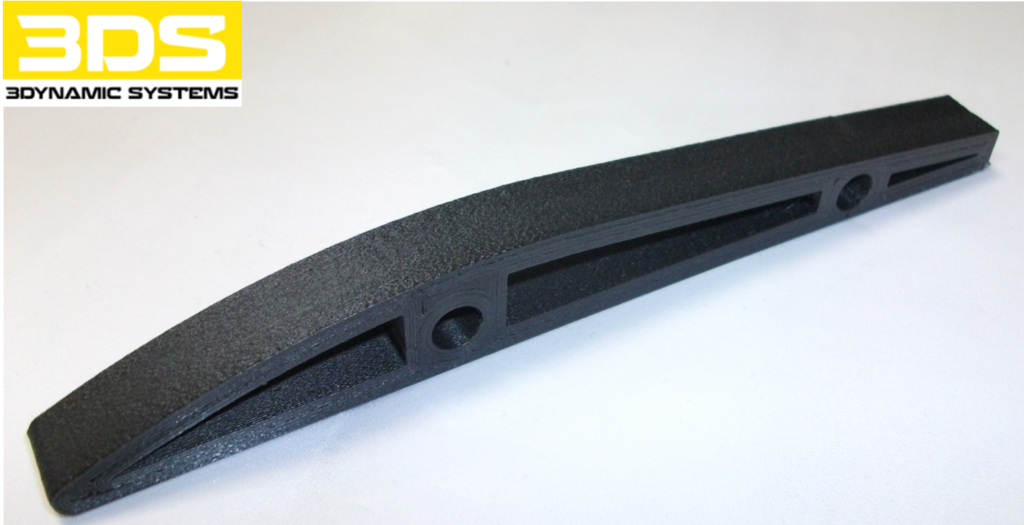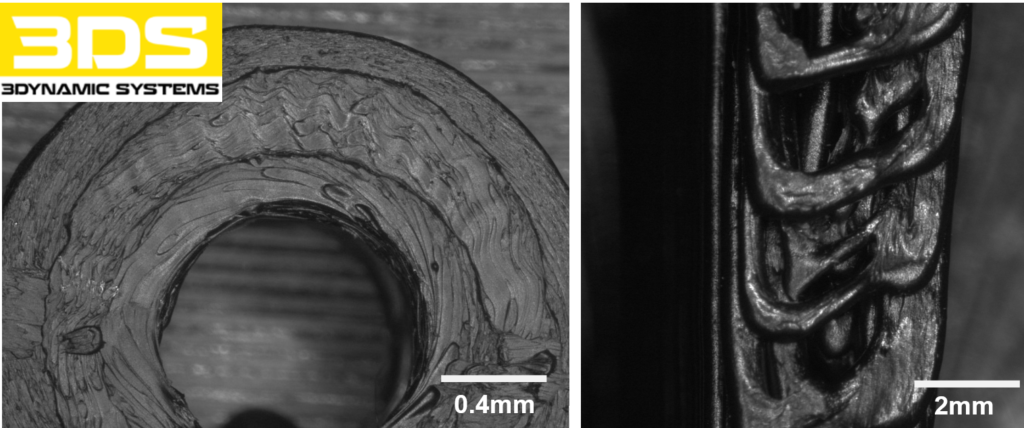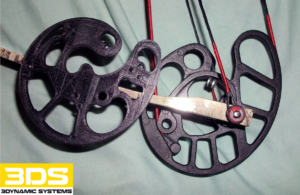When it comes to improving the mechanical qualities of the objects we are able to produce with 3D printing, there’s no beating around the bush; enhancing the materials we use is a critical factor in the overall viability of the technology. Carbon fiber, which is a unique material known for being both durable and lightweight, is one of most appealing materials to 3D printing users on a commercial and consumer level. From industrial-grade mountain bike production to FDM 3D printing filaments, carbon fiber-reinforced materials have become the belle of the 3D printing ball.
Now, the UK-based advanced filament producer 3Dynamic Systems (3DS) has just introduced their new ultra-high-strength Carbon Fibre filament, a high-end polymer blend engineered for FDM 3D printing. The production of their new filament stems from their work on composite materials formulated for the aerospace industry to produce complex geometrical satellite structures. 3DS utilized short carbon fibers to ensure that the filament is able to fit through the printing nozzle, while still maintaining the rigidity and structural reinforcement that traditional carbon fiber is revered for.
“When we started to build our first 3D printers back in 2011 we never dreamed that they would be able to produce high end structural parts. Our advanced formulation has taken some time to get right and the work to produce 3D printable composites has stretched across the past four-years,” said Dr. Daniel J. Thomas, the designer of 3Dynamic Systems’ new hybrid polymer. “We have formulated this special polymer which I am sure will amaze makers everywhere.”
According to 3DS, the carbon fiber-reinforced filament has a structural strength of 105MPa, which is commendable for FDM printing technology, as well as excellent layer adhesion with no noticeable warping. Although the new 3DS filament probably won’t be used for parts on a Boeing or Airbus aircraft, it has a wide range of useful applications, including radio-controlled airplanes, drones, bike parts, frames, supports, propellers, and various work tools.
According to 3DS, their Carbon Fibre filament is engineered to extrude at a temperature of around 210-220°C, and when compared to conventional ABS and PLA, provides more than double the stiffness and upper tensile strength. The production of this high-performance filament begins with the mixture of short carbon fibers and a special polymer blend, which is then cured and pelletized. These pellets are then extruded into a 1.75 mm filament, which is subsequently cooled in water, dried, gathered, and last but not least, wound up and sectioned.
It’s important to note that the carbon fibers used in the filament are more abrasive then standard filament, and thus a high quality nozzle is suggested for long-term use. According to 3DS, they will release a concrete 3D printing filament early in 2017, a specialized filament that is placed into hot water and cured in an oven after being 3D printed. Both the Carbon Fibre and forthcoming concrete filaments may sound too good to be true, but if 3Dynamic Systems’ recent work with bioprinting and aerospace-grade materials shows anything, it’s that these filament producers are among the most capable around. The Carbon Fibre filament costs $50 for 500 grams of 1.75 mm filament, and you can order a free sample directly through 3DS. Discuss this new material further over in the Carbon Fibre 3D Printing Filament forum at 3DPB.com.
Subscribe to Our Email Newsletter
Stay up-to-date on all the latest news from the 3D printing industry and receive information and offers from third party vendors.
You May Also Like
US Army Corps of Engineers Taps Lincoln Electric & Eaton for Largest 3D Printed US Civil Works Part
The Soo Locks sit on the US-Canadian border, enabling maritime travel between Lake Superior and Lake Huron, from which ships can reach the rest of the Great Lakes. Crafts carrying...
Construction 3D Printing CEO Reflects on Being Female in Construction
Natalie Wadley, CEO of ChangeMaker3D, could hear the words of her daughter sitting next to her resounding in her head. “Mum, MUM, you’ve won!” Wadley had just won the prestigious...
Blue Laser-powered M600 3D Printer Launched by Meltio
Founded in 2019 as a joint venture between Additec and Sicnova, metal 3D printer OEM Meltio develops and manufactures high-performance and easy-to-use metal 3D printing solutions that use its patented wire-laser metal...
3D Printed Storage Tanks Cut Material Costs by 25%
In a previous article, “Concrete Dreams: Let’s Print Money, Not Houses,” we discussed how the spotlight on 3D printing homes might be misplaced. Bollards, pedestrian bridges, and concrete tanks could...
































